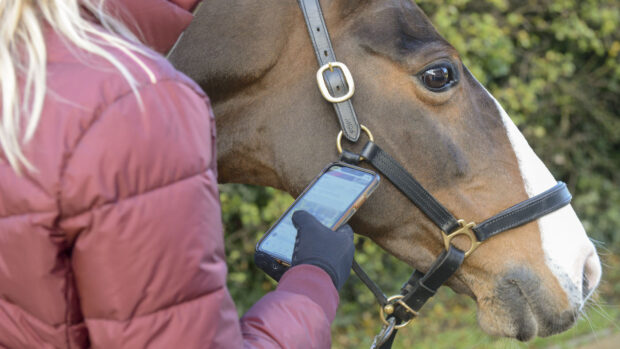Setting up camp in temporary stabling can have its challenges. Andrea Oakes discovers the secrets to maintaining a slick operation on the road
1. Inspect the stable upon arrival
Fran Callan travels internationally as head show groom to showjumper Trevor Breen’s horses. Her first tip is to inspect the stable upon arrival. “Check for nails, screws and staples that might be sticking out of the walls, remembering that a horse is taller and may reach up higher,” she says. “Check, too, that the door locks properly, so there are no escapees. Trevor’s stallion once made a bid for freedom and ended up in the feed room.”
2. Take rubber matting with you
Fran takes rubber matting to lay down at the front of the stable, at least, to prevent grazed hocks. “In a small stable I build solid banks and lay the bed right to the door,” she says. Dressage rider Phoebe Peters adds: “Rubber matting prevents moisture from rising through bedding and also stops the pony getting to the grass and having a great time eating it!”
3. Stick to the horse’s routine
“We try to stick to their usual routine,” says Fran, who recommends talking to the people whose horses are stabled near yours to find out what time they feed. “There are usually nice places on the showground where the horses can stretch their legs and graze in-hand, so we do that twice a day.
“We hang the water buckets nice and high and take the horses’ toys, teddies and salt licks — anything that’s familiar to them.”
4. Prepare for rain
Not every aspect of showground life will be within your control. “Rain is a tough one,” admits Fran. “Leaky roofs can be a problem, so take extra bedding, just in case, and request a change of stable if yours floods. If the weather is very hot, keep doors open where possible, use electric fans and hang drapes to keep flies out.”
5. Watch out for unusual behaviour
Watered-down disinfectant in a spray bottle is a simple but effective hygiene measure, but a change of environment can trigger respiratory problems or allergic reactions. “Colic is always a risk,” says Fran. “We take the horses’ temperatures on arrival and record them throughout the show. It’s important to be vigilant for any unusual behaviour, such as pawing and rolling, and to notice how much your horse is eating and drinking.”
6. Plan carefully
Event groom Zanie King finds that her “slight OCD tendencies” mean meticulous trip planning. Armed with a staple gun and a good supply of string, along with bridle hooks, rug rails and waterproof trunks, Zanie creates an efficient home away from home for Laura Collett’s event horses.
7. Think ahead
Zanie’s top tip is to think ahead — and out of the box. “Take the horse’s personality into consideration when you book stabling,” she explains. “Ask for an end of row stable for a stallion or a difficult mare, or one mid-aisle for a fractious horse who prefers not to be alone. You have to put up with things to an extent, but you can make requests.”
Like this? You might also enjoy reading these:
Feeding while on the move
10 tips to banish competition riding nerves
8. Get horses used to people rather than their surroundings
Dressage rider Anna Ross believes that preparation for trips should start early in a young horse’s education. “Our yard policy is that we don’t encourage them to think ‘this is my stable’,” she explains.
“We switch stables around a bit so that no horse is too addicted to his own home, which makes it much easier when they stay away. We do pander to them a little at shows,” adds Anna, who recommends a stable guard for a horse who gets stressed if he can’t put his head over an enclosed door.
“Some prefer to mind their own business, but others want to be involved and might be better stabled next to the tack room. We can’t always choose the environment, though, so we prefer to get them used to people rather than surroundings. It’s important that the people handling them are calm and unflustered.”




